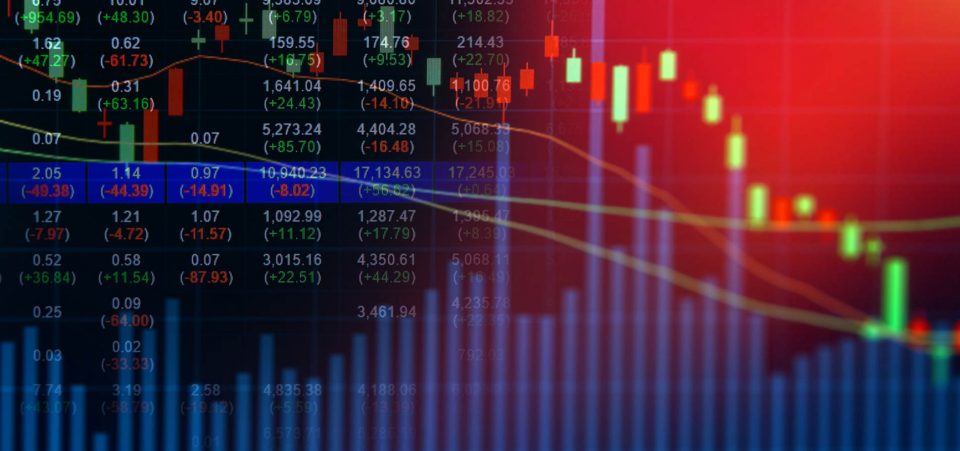A Market Correction Is Enough to Trigger the Next Great Recession
Market volatility would appear low now. But the Dow Jones, which closed before the July 4 holiday at 21,479, has been struggling to reach beyond the current plateau. Yet, since the beginning of the year, risks have lowered in Europe but increased in the United States in the short and medium term. These and sluggish growth could be the prelude of a U.S. recession.
At the beginning of the year, two major threats had been integrated into the markets. These were the ones that many expected to spark a stock market correction. The first threat was a combined one emanating from the prospect of several elections in European Union member states like the Netherlands or France.
While Europe has swallowed that risk, given the win of centrist or mainstream parties, the appeal of populist opposition movements has not ended. There is another major test coming up in Germany, but the illegal migration crisis from Africa to Europe has intensified. The debate over what to do risks spilling over into economics and finance.
Also Read:
“Economic Crash 2017” and How Next Financial Crisis Could Be Worse than 2008
The Migration Crisis Could Spark a Recession
The migrants are not going to make the stock market crash with their investment strategies of course. But, they are going to put pressure on overburdened European welfare systems and ever angrier local European citizens, many of whom are unemployed and need assistance. The migrant pressure is testing the cohesiveness of the EU and with it, its institutions.
The EU, in other words, remains on the edge of disintegration. Austria has sent the army to guard its border with Italy, raising all kinds of historical specters of past wars that the EU project was supposed to have suppressed forever. But the more market-relevant risk is the fate of the euro.
The European Central Bank, the European equivalent of the Federal Reserve, recently produced favorable economic statistics. The numbers paint a more optimistic economic picture of the eurozone than many had expected. Growth has returned even to Greece and Italy. But, the migrant crisis has put a vise grip on any good news. The source of EU citizens’ stress is coming from well beyond the markets.
The seemingly uncontrollable phenomenon of refugees and economic migrants pushing at Europe’s gates and ports seems insurmountable. It’s being portrayed as some new form of the plague, whose periodic outbreaks afflicted Europe for centuries until the past few hundred years. The financial stress alone is enough to prompt the next recession prediction.
But a collapse of the euro remains a huge risk, which could spark a stock market crash in 2017 or 2018. Some would argue that this would be good for the U.S. dollar and the U.S. economy. The dollar might gain over the euro or whatever might crumble from its fragmentation. But there’s also the issue of the White House pursuing an unfavorable trade and foreign policy as far as the world economy is concerned. What happens to the U.S. affects the world economy, and what happens in the world economy eventually affects the United States.
Washington has been distracted from its agenda by the fruitless—putting it mildly—Russiagate investigation. The markets have performed better than many had expected because of Trump’s promises of fiscal stimulus and deregulation measures. Both policies were intended to favor American companies.
Yet, the stocks that have been making the strongest gains—relative also to price/earnings ratios have been defense sector ones. The tech stocks have also seen strong results, but weaker when their valuations are compared to actual results. In addition, American financials have also not performed as strongly as some might have expected. When the banks and financial services companies start to lose steam, they become weak or dangerous.
The Market Can Expect Further Disappointments
The gradual raising of interest rates might turn out to be premature. America’s debt situation is no stronger now than it was on the eve of the last recession outbreak in 2007-2008. Then, it was the housing market and its related sub-prime mortgages that blew up first. It dragged stock indices down worldwide, sparking a major economic recession—or depression—not seen since before WWII.
Americans still face the risk of housing debt crises. Mortgage rates are going to rise as the Fed continues to apply nominal rate increases. That’s going to make it harder for Americans to borrow and even harder to pay back their mortgages and loans given stagnant wage and economic growth. Thus, these could be sufficient in triggering a stock market crash.
The combination of the political risk from the EU—and beyond, given that Russia and the U.S. have not exactly established the cozy relationship many had envisaged—and U.S. market exuberance is explosive. They help sustain a systemic risk, which could have widespread adverse effects.
American economic growth has disappointed. The latest GDP figures showed growth of 1.3%, but not the three percent that many expected. Should the growth path remain soft until the end of the year, with the result of a GDP rise of less than one percent and amorphous inflation, this could jeopardize the Fed’s interest hike policy.
Then there is the matter of China. Chinese authorities are losing their tight grip on regulation and economic growth. Beijing has decided to take the lead by tightening the screw at the economic and monetary level while maintaining a GDP growth target of around 6.5%. Oil prices are low now, but the risk of war in the Middle East has increased. Apart from the proxy wars being fought in Syria or Iraq, there are also crises brewing amid oil and natural-gas-producing princedoms such as Qatar—threatened by Saudi Arabia.
The world economy is not ready for a new oil price shock. The change in the price of a barrel of oil could become a major source of disruption. It might be enough to force a major market correction and force the U.S. into a recession.






